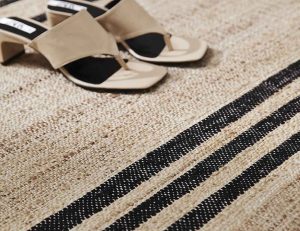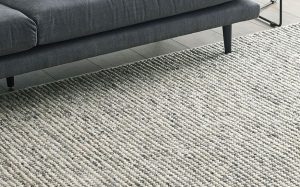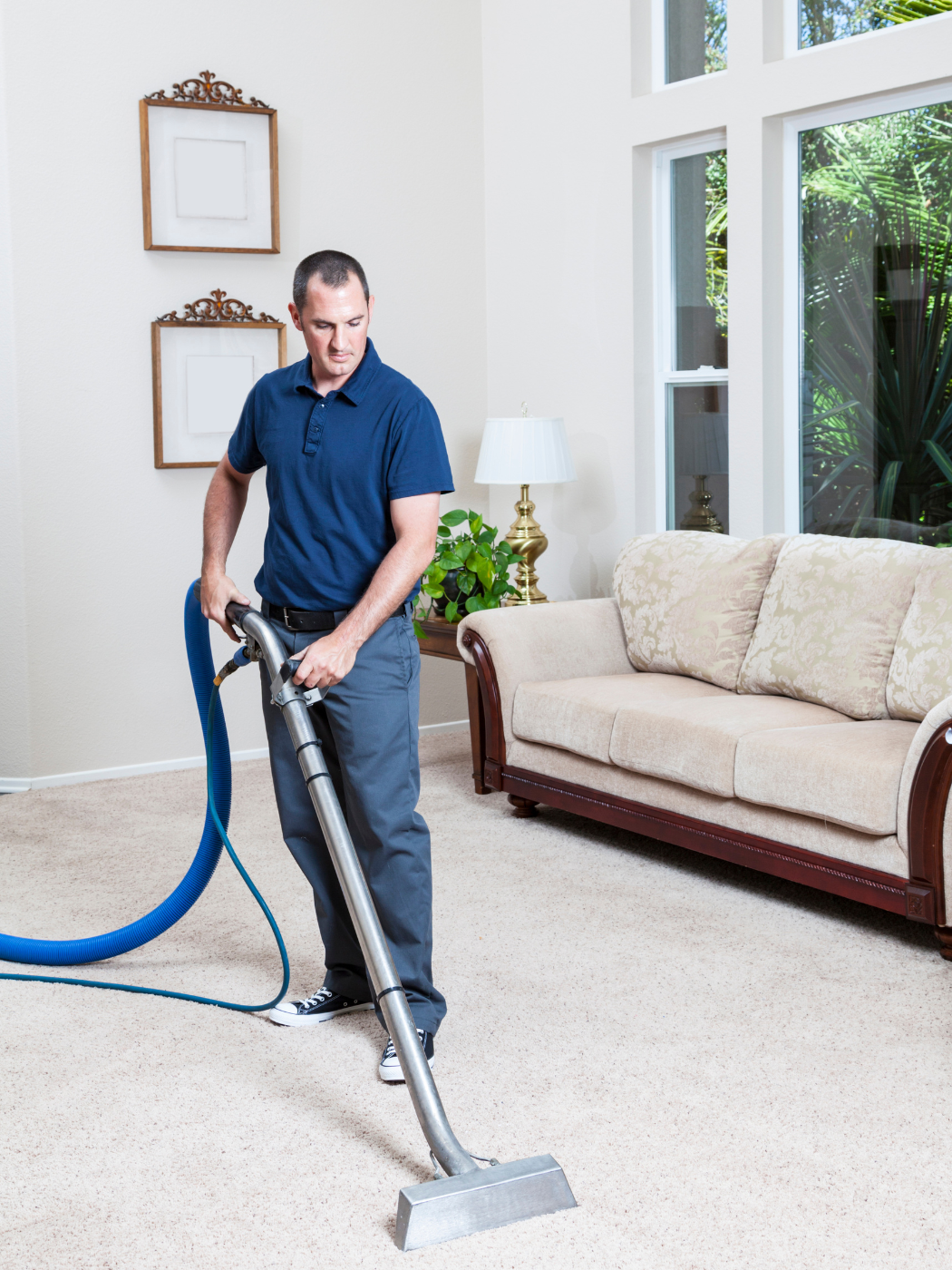
Guide on How to Clean A Rug at Home
Keeping your home clean and healthy extends beyond just tidying up; it involves taking care of every item within your space, especially carpets.
Rugs can trap dust, allergens, and stains, detracting from your home’s cleanliness and air quality. Recognising this, we aim to walk you through an effective, step-by-step guide on how to clean a rug at home.
At Huset, we want to help you maintain your carpet in pristine condition, ensuring they continue to enhance your living space without compromising on hygiene or health. Whether you’re dealing with everyday dust or challenging stains, our comprehensive approach will help you tackle rug cleaning with confidence and ease.
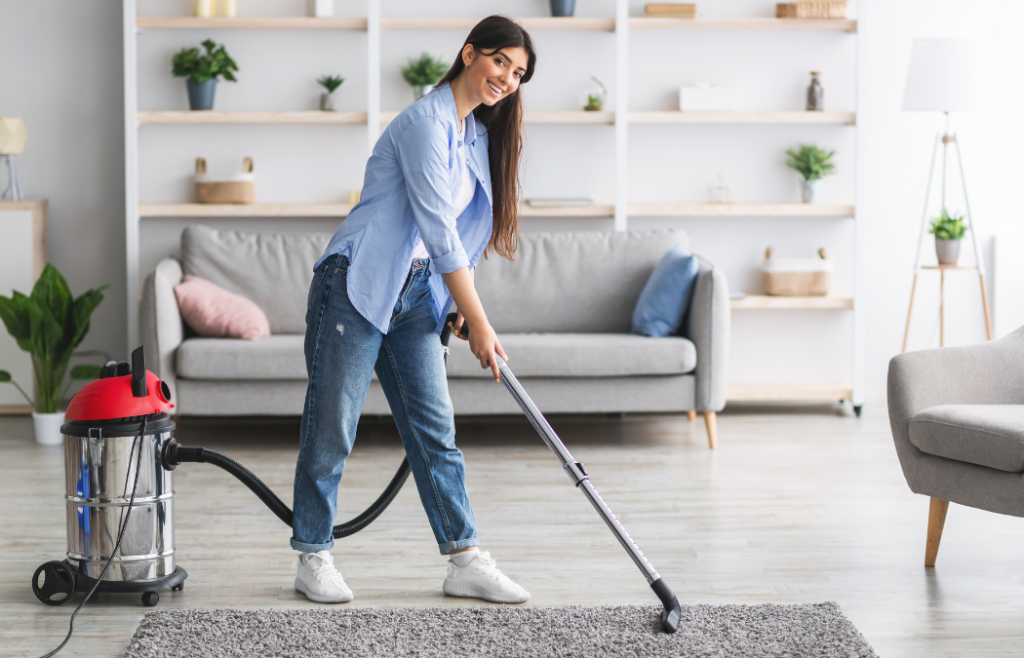
Exploring Popular Rug Fabrics
| TYPE | DESCRIPTION |
|---|---|
| Wool Rugs | Known for their warmth and durability, wool carpets are a popular choice for many homes. However, they require gentle cleaning methods to avoid shrinking and damage to their natural fibres. Specialised wool-safe cleaners and minimal water are recommended. |
| Synthetic Rugs | Made from man-made fibres like nylon, polyester, and polypropylene, synthetic carpets are less expensive and highly durable. They can withstand stronger cleaning solutions and methods, making them easier to maintain than natural fibre mats. |
| Silk Rugs | Valued for their softness and sheen, silk carpets are luxurious and delicate. They are prone to damage from water and harsh chemicals, often requiring professional cleaning to preserve their beauty and integrity. |
| Cotton Rugs | Cotton rugs are lightweight and casual, often used in kitchens and casual living spaces. They can usually be machine-washed or cleaned with gentle detergents, making them relatively easy to maintain. |
| Jute Rugs | Jute rugs, crafted from natural plant fibres, bring a warm, earthy texture to any space. They are known for their durability and sustainability, making them a popular eco-friendly option. However, jute mats are also highly absorbent and sensitive to water, which can cause shrinkage, warping, or mildew if they become too damp. |
| Bamboo Rugs | Offers a hard surface and is typically used in runner rugs or as matting. Bamboo mats are known for their sustainability and ease of care. |
| Leather Rugs | Leather mats can be woven strips of leather or whole hides and offer a unique texture and pattern. They require special cleaning methods to maintain their appearance. |
| Chenille Rugs | Not as common for the entire carpet but is often used for borders or accents. Chenille is soft and has a slight sheen, adding a luxurious feel to any carpet. |
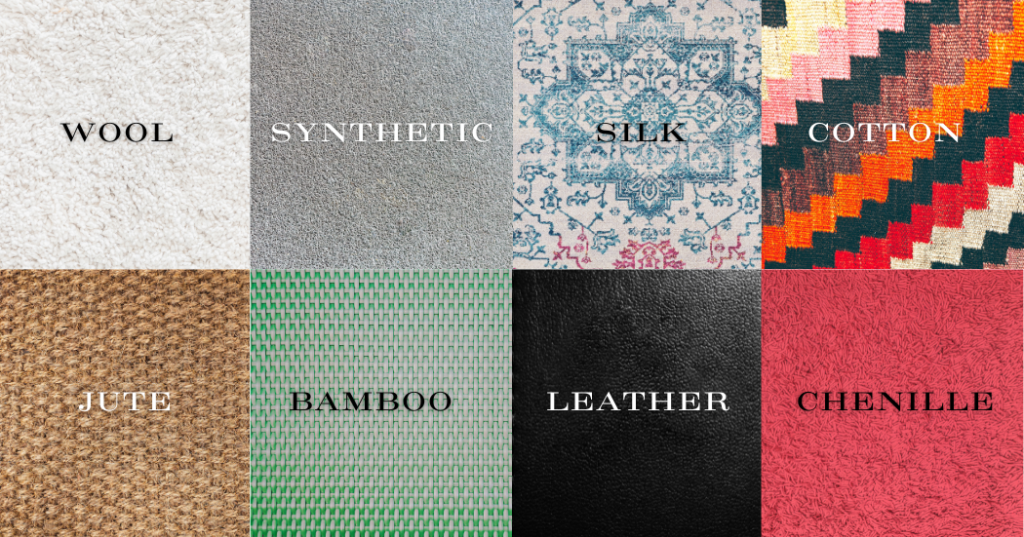
Influence of Rug Type on Cleaning Method
| Material Matters | The composition of your mat significantly influences the cleaning process. For instance, natural fibres like wool and silk are more sensitive to water and chemicals than synthetic fibres. |
| Cleaning Techniques Vary | The cleaning method needs to match the carpet’s material. Whether it’s dry cleaning, steam cleaning, or a simple hand wash, picking the right method is key to avoiding damage. |
| Choosing the Right Cleaners | Your mat’s fabric dictates the kind of cleaning products you should use. Go for gentle, pH-balanced cleaners for natural fibre rugs, while synthetic ones can handle tougher cleaners. |
| Professional vs. DIY Cleaning | Home cleaning works for many synthetic and cotton carpets. Yet, for those precious or fragile mats made from materials like silk or high-end wool, calling in the pros is a safer bet. |
Understanding the specific needs of your rug type is essential for effective cleaning and maintenance. By tailoring your cleaning approach to the material of your mat, you can ensure its longevity and keep it looking its best.
Getting Ready for Rug Cleaning
Before you start, preparing properly can make cleaning your carpet both safe and effective. Here’s how:
Check Your Carpets’s Current State:
- Look for Damage: Spot any wear, tear, or damage. Handle these areas carefully to avoid making things worse during cleaning.
- Spot Stains: Identify stains by their type, like food or ink, as this decides the cleaning method and solution you’ll need.
- Age and Material Matter: Delicate materials and older rugs might need a softer approach or a professional’s touch.
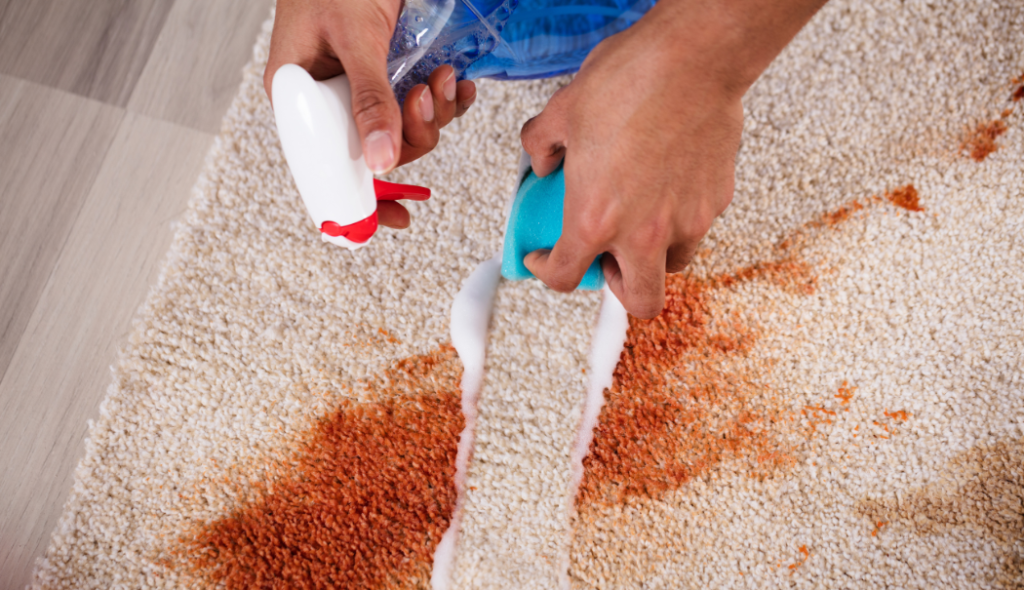
Choosing How to Clean:
- Follow the Manufacturer’s Advice: Always look for cleaning tips from the rug’s maker to avoid damage.
- By Material: Your rug’s material, be it synthetic, wool, silk, or jute, guides your choice of cleaning method.
- Cleaning Level Needed: Figure out if your rug needs a quick spot clean, a full surface clean, or a deep clean.
What You’ll Need:
- Right Cleaners: Pick a cleaning solution that suits your rug’s fabric. Stick to mild detergents and steer clear of bleach unless it’s recommended.
- Cleaning Tools: Ready a soft brush or sponge for scrubbing, clothes for blotting, and a vacuum for dust.
- Safety First: Wear gloves or goggles when using cleaning solutions to protect yourself.
- Air It Out: Make sure there’s good airflow where you’re cleaning to speed up drying and clear out any chemical smells.
By assessing your mat and getting the right tools and cleaners ready, you can clean it without harm, keeping it looking great for years.
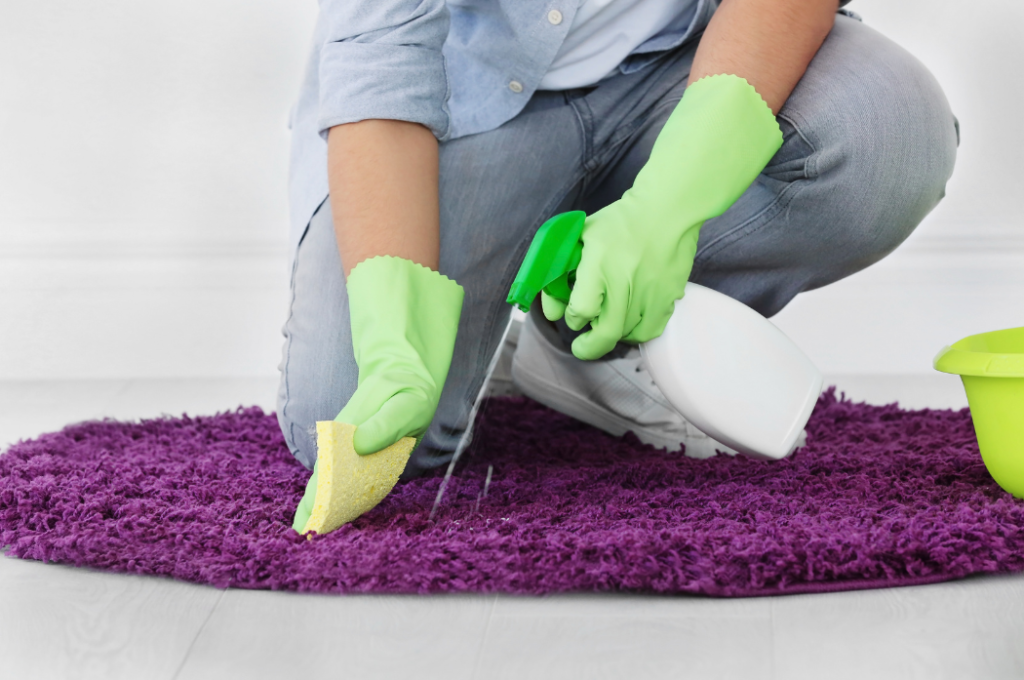
Steps to Effortlessly Cleaning Your Rug
STEP 1 – Vacuuming Your Rug
Vacuuming is key to keeping your carpet in top shape. Here’s how to do it right:
- Why It Matters: Vacuuming pulls out dirt and dust that, over time, can wear down your carpet’s fibres.
- Freshen Up: Sprinkle baking soda on your carpet before vacuuming for extra freshness.
- The Right Way: For wool rugs, use a gentle setting. Synthetic rugs can handle a bit more power. Always avoid the fringe.
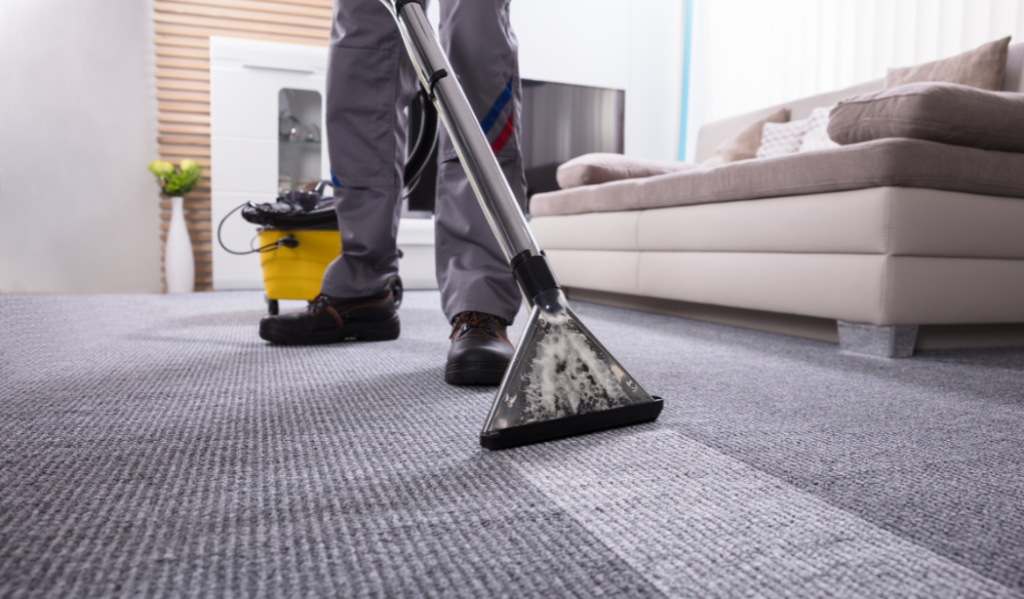
STEP 2 – Spot Cleaning Spills and Stains
Act fast to keep spills from becoming permanent stains:
- Immediate Action: Blot spills quickly with a clean, dry cloth. Don’t rub, or you’ll push the spill deeper.
- Choosing Cleaners: Use homemade solutions like vinegar and water for natural rugs, or try commercial cleaners for tougher jobs on synthetic ones.
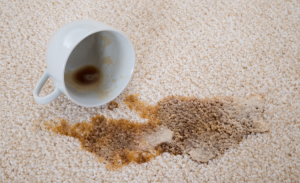
STEP 3 – Deep Rug Cleaning
Sometimes your carpet needs more than a surface cleaning:
- Dry vs. Wet Cleaning: Dry cleaning is less risky for delicate rugs, while wet cleaning can be more thorough for durable materials.
- Doing It Right: Follow your carpet’s care label. For wool, avoid excessive water. Synthetic mats can often handle a more thorough wet clean.
By following these steps, you can keep your mat looking its best for years. Always start with the care instructions on your carpet for the best results.
DIY Rug Cleaning Solutions
Embrace the power of natural ingredients to keep your carpet clean and fresh. Here’s how to whip up your solutions and when to use them:
| DIY SOLUTION | RECIPE | USE FOR | HOW TO USE |
|---|---|---|---|
| Vinegar and Water Solution | Mix one part white vinegar with three parts water. | Great for wool and synthetic rugs. It’s perfect for spot cleaning and deodorising. | Blot the stain with the solution, then rinse with water. Avoid soaking. |
| Baking Soda and Salt | Combine equal parts baking soda and salt. | Ideal for all carpet types for lifting dirt and absorbing moisture. | Sprinkle the mixture on the carpet, let sit for an hour, then vacuum up. |
| Dish Soap Solution | Mix a few drops of mild dish soap into a bucket of water. | Synthetic rugs, especially for oily stains. | Dip a cloth into the solution, dab on the stain, then rinse with a water-dampened cloth. |
| Lemon Juice Brightener | Mix one part lemon juice with two parts water. | Brightening faded areas on natural fibre carpets. | Apply lightly with a spray bottle, then blot and air dry. Test on a small area first. |
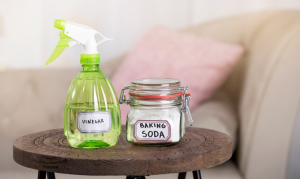
When to Use DIY Solutions
- Spot Cleaning: Immediately after a spill occurs to prevent staining.
- Maintenance Cleaning: For regular upkeep, especially in high-traffic areas.
- Deep Cleaning: When your mat needs a thorough cleaning, always test a small, inconspicuous area first to ensure there’s no discolouration or damage.
Natural solutions can be surprisingly effective for carpet maintenance. However, for delicate or valuable carpets, consider consulting a professional cleaner to avoid accidental damage.
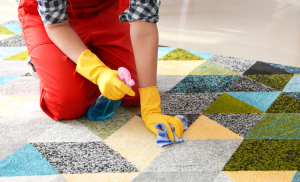
Drying Rugs Safely to Prevent Damage and Mould
Drying your carpet properly is as crucial as cleaning it correctly. Here’s how to do it without risking damage or mould growth:
Outdoor Drying Techniques
- Hang It Up: If you have outdoor space, hang your carpet over a railing or a sturdy clothesline. Avoid direct sunlight to prevent fading.
- Elevate: Use clean, elevated surfaces to allow air circulation on both sides. This method helps prevent mould and mildew.
Indoor Drying Strategies
- Towel Dry: Lay towels over and under the mat. Press to absorb excess moisture. Change towels as needed.
- Use Fans: Position fans around the carpet to speed up the drying process. Ensure the room is well-ventilated to avoid dampness setting in.
Avoiding Damage and Mould
- Don’t Rush: Allow the mat to dry completely before putting it back in place. This might take up to 24 hours or more, depending on the mat material and thickness.
- Check the Back: Make sure the underside of the mat is entirely dry. Moisture trapped underneath can cause mould.

Professional Rug Cleaning: Knowing When and How Often
Even with diligent care, your mat will eventually need professional cleaning to remove deep-set dirt and allergens. For valuable, antique, or very delicate rugs, consider professional cleaning and drying services to ensure they’re handled with care.
| Frequency | Generally, having your designer rug professionally cleaned every 12 to 18 months is a good rule of thumb. However, high-traffic areas or homes with pets or allergies might require more frequent cleanings. |
| Signs Its Time | A visibly dull appearance, or persistent odours, or if vacuuming no longer restores its look, it’s probably time for a professional cleaning. |
Common Rug Cleaning Mistakes to Avoid
Ensuring your mat remains a beautiful part of your home means steering clear of common cleaning pitfalls:
| MISTAKES | DESCRIPTION |
|---|---|
| Over-wetting | Too much water can damage the rug’s fibres and backing, leading to shrinkage, colour bleeding, or mould. |
| Using Harsh Chemicals | Strong detergents can break down the fibres, fade colours, and leave residues that attract more dirt. |
| Scrubbing Stains | Vigorous scrubbing can push the stain deeper and damage the carpet fibres. Always blot gently instead. |
| Ignoring the Manufacturer’s Care Instructions | These guidelines are designed specifically for your rug’s material and construction. Following them can prevent damage. |
By adopting these maintenance practices and being mindful of common mistakes, you can keep your outdoor rug looking its best for years to come, creating a healthier and more inviting space in your home.
Tips for Preserving the Colour and Texture of Your Rug
Maintaining your rug’s vibrant colour and soft texture requires careful cleaning practices:
| TIPS | DESCRIPTION |
|---|---|
| Vacuum Without Brushes | Use the vacuum’s suction-only mode or disable the beater bar to prevent pulling out fibres or causing Pilling. |
| Spot Clean with the Right Solution | Use a solution that’s suitable for your rug’s material. Homemade solutions like a mix of water and vinegar are often safe for many types of carpets. |
| Dry Properly | After cleaning, ensure your mat is thoroughly dried. Hang it outside away from direct sunlight or use fans to speed up the indoor drying process, avoiding harsh heat sources that can affect the mat’s texture. |
| Rotate Regularly | Rotating your carpet 180 degrees every six months can ensure even wear and fading, especially for carpets placed in sunny areas or under heavy furniture. |
| Use Rug Pads | Place a pad under your mat to minimise wear and tear. Carpet pads absorb impact and can help prevent the crushing of carpet fibres under furniture weight. |
| Limit Sunlight Exposure | Continuous exposure to sunlight can fade your mat. If possible, position your carpet out of direct sunlight or use window treatments to filter the light. |
By steering clear of common cleaning mistakes and following these tips, you can keep your rug looking as beautiful as the day you bought it, contributing to a cleaner, more inviting home environment.
Wrapping Up: Keeping Your Rug Beautiful and Durable
Regular mat cleaning plays a crucial role in maintaining a clean, healthy, and vibrant home environment. Not only does it extend the life of your carpets, but it also ensures they continue to beautify your space without compromising indoor air quality. The effectiveness of home cleaning, when done correctly, can rival professional results, saving you time and money.
Incorporating carpet cleaning into your regular home maintenance routine not only preserves the aesthetic appeal of your rugs but also contributes to a healthier living space. Simple practices like vacuuming, spot cleaning, and the occasional deep cleaning can significantly affect how your home looks and feels.
We’re always here to share useful tips and tricks to keep your home looking its best. Let’s make home maintenance easy and effective together!
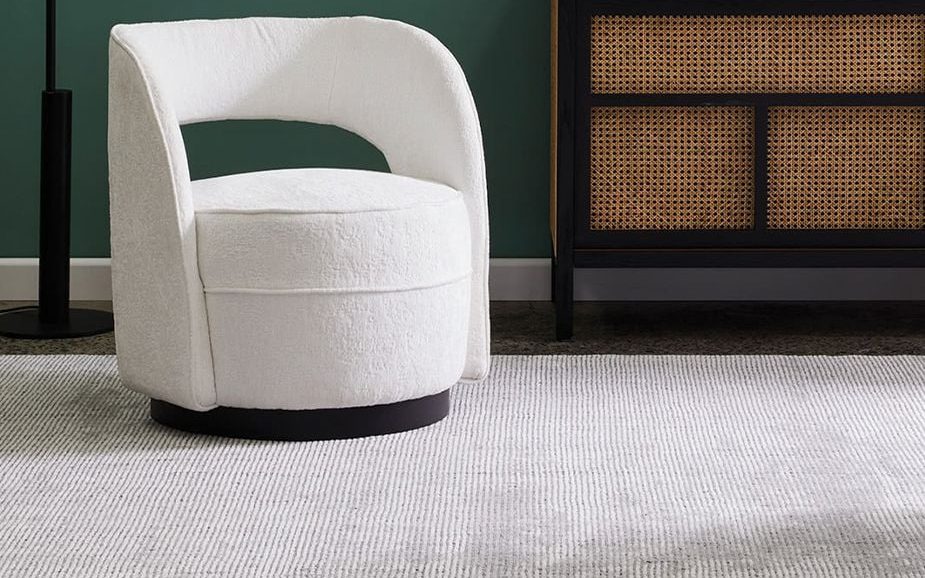
Frequently Asked Questions
Mild laundry detergent diluted in water can clean rugs, especially synthetic ones. Use sparingly and rinse thoroughly to avoid residue.
Using Windex or any ammonia-based cleaner on rugs is not recommended, especially for natural fibres, as it can damage the material and discolour the fabric. It’s better to stick with cleaners specified for rug use.
Cleaning an expensive rug at home requires gentle methods. Vacuum gently, spot clean with mild detergents, and avoid excessive water. For deep cleaning, consulting a professional is safest.
Expensive rugs typically feature higher-quality materials and craftsmanship, offering better durability and design than cheaper alternatives.
Signs a rug is dirty include visible stains, dull colours, and odours. A simple test is to lift a corner and let it fall; if you see a cloud of dust, it’s time for a clean.

